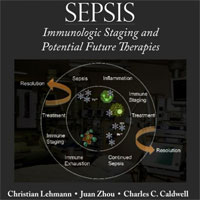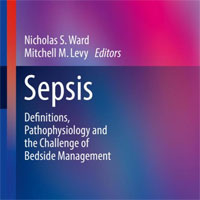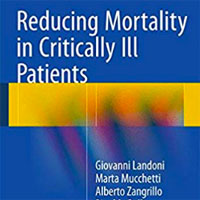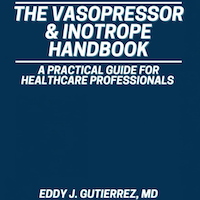Tag: pulmonary embolism
Baricitinib Use in Children with Severe COVID-19 Infection
Baricitinib appears safe for both immunocompetent and immunocompromised children hospitalized for severe COVID-19. Most adverse events did not inhibit therapy administration, and there were no deaths following the initiation... read more
The Pharmacist’s Expanded Role in Critical Care Medicine: A Comprehensive Guide for Practitioners and Trainees
This new book will serve as a useful resource for all pharmacists involved in the management of critically ill patients, whatever their level of experience and training. There are few textbooks aimed specifically at critical... read more
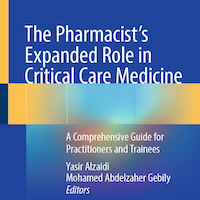
VA-ECMO and Pulmonary Reperfusion
The study by Stadlbauer and colleagues provides further evidence that veno-arterial extracorporeal membrane oxygenation (VA-ECMO) should—whenever necessary—be used, as a bridge to pulmonary reperfusion, but not as a bridge... read more
Massive Pulmonary Embolism with Clot in Transit Using Fluoroscopic and Transthoracic Echocardiographic-Guided Large-Bore Mechanical Thrombectomy
Massive pulmonary embolism (PE) is a life-threatening condition caused by the obstruction of pulmonary arteries requiring precise and timely intervention to prevent mortality. Clots in transit (CIT), which are thrombi... read more
Management of Patients Supported with VA-ECMO
Veno-arterial extracorporeal membrane oxygenation (VA ECMO) application in adult patients has significantly increased in recent years. The Extracorporeal Life Support Organization (ELSO) registry includes more than 39,000... read more
Impact of Time to Catheter-Based Therapy on Outcomes in Acute Pulmonary Embolism
Early catheter-based therapie (CBT) was associated with improved clinical outcomes in patients with acute intermediate-risk pulmonary embolism (PE). The composite PE shock score may help identify patients who will benefit... read more
Atypical Presentation of Pulmonary Embolism in Patients with Refractory Hypoxemia and Dyspnea
Pulmonary embolism (PE) should be strongly considered in patients presenting with refractory hypoxemia and dyspnea, even in the absence of clinical signs of deep vein thrombosis (DVT). This study highlights the importance... read more
Pulmonary Manifestations in Patients With Hematologic Malignancies
Pulmonary involvement is common in patients with hematologic malignancies (HMs) and varies depending on the underlying condition, including lymphoproliferative disorders, acute leukemia, myelodysplastic syndrome, and allogeneic... read more
Corticosteroid Therapy and Pulmonary Embolism in Polytrauma Patients
Pulmonary embolism is a frequent complication in polytrauma patients. The aim of our study was to evaluate the effect of low-dose corticosteroid therapy on the incidence of pulmonary embolism (PE) in polytrauma patients.... read more

Risk Factors for Secondary Organizing Pneumonia and Acute Fibrinous and Organizing Pneumonia in Patients with COVID-19 Pneumonia
Based on our findings, we observed that age ≥50 years, diabetes mellitus, and severe hypoxemia on admission (SpO2 ... read more
Omadacycline Treatment of Severe Pneumonia Complicated with ARDS During COVID-19
Metagenomic next-generation sequencing (mNGS) has a significant value in the diagnosis of Chlamydia psittaci infection. Timely treatment of omadacycline can improve prognosis and provide a promising new option for the treatment... read more
TXA Should be Urgently and Broadly Adopted for Brain Bleeds
Everything looked better with tranexamic acid (TXA), and none of it was statistically significant. True, in a subgroup analysis of patients who actually had a head bleed on imaging—which, gee whiz, seems like an important... read more
Beware the Painless Pulmonary Embolism
Many EPs know that myocardial infarction can be painless in about 20 percent of cases but are unaware that the same is true of pulmonary embolism. Many conditions, in fact, that are typically quite painful are actually... read more
VA-ECMO in High-Risk Pulmonary Embolism
High-risk Pulmonary Embolism (PE) has an ominous prognosis and requires emergent reperfusion therapy, primarily systemic thrombolysis (ST). In deteriorating patients or with contraindications to ST, Veno-Arterial Extracorporeal... read more
Coronary Sinus Value During CTPA for Predicting Pulmonary Hypertension in Patients with Acute Pulmonary Embolism
The coronary sinus ostium area (CSOA) and coronary sinus ostium diameter (CSOD) demonstrated a good ability to predict PH. However, the CSOA exhibited a better performance for predicting development of PASP >30 mmHg. CSOA... read more
Thrombotic and Bleeding Complications During Antithrombotic Treatment
Remarkable progress has been made in the pharmacological management of patients with cardiovascular disease, including the frequent use of antithrombotic agents. Nonetheless, bleeding complications remain frequent and potentially... read more
Temporal Trends in the Use of Computed Tomographic Pulmonary Angiography for Suspected Pulmonary Embolism
Despite the recent validation of clinical decision rules to limit the use of computed tomographic pulmonary angiography (CTPA), an increase in the CTPA rate along with more diagnosed pulmonary embolism (PE) and especially... read more
High-risk Pulmonary Embolism in the ICU
According to the European guidelines, high-risk pulmonary embolism (PE) is defined as PE associated with hemodynamic instability, including sustained hypotension, cardiogenic shock and/or cardiac arrest. High-risk PE... read more
Making Sense of Lung Function Tests
Respiratory problems are the most common cause of acute admission to hospital. A variety of diagnostic investigations are required, both for acute and clinic assessment. Making Sense of Lung Function Tests, Second Edition... read more
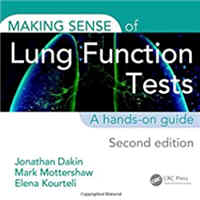
MECA in Medical Emergency Situations Significantly Reduced Failure Rates
In our simulation, the use of medical emergency cognitive aid (MECA) in medical emergency situations significantly reduced failure rates. The use of MECA was widely accepted, and MECA were easy to use. In a high percentage,... read more
Tranexamic Acid in Gastrointestinal Bleeding
Extended-use high-dose IV tranexamic acid does not improve mortality or bleeding outcomes and increases adverse events. Low-dose/enteral tranexamic acid may be effective in reducing hemorrhage; more evidence is required to... read more
Risk of Serious Blood Clots Up To 6 Months After COVID-19
A study from Sweden finds an increased risk of deep vein thrombosis (a blood clot in the leg) up to three months after COVID-19 infection, pulmonary embolism (a blood clot in the lung) up to six months, and a bleeding event... read more






